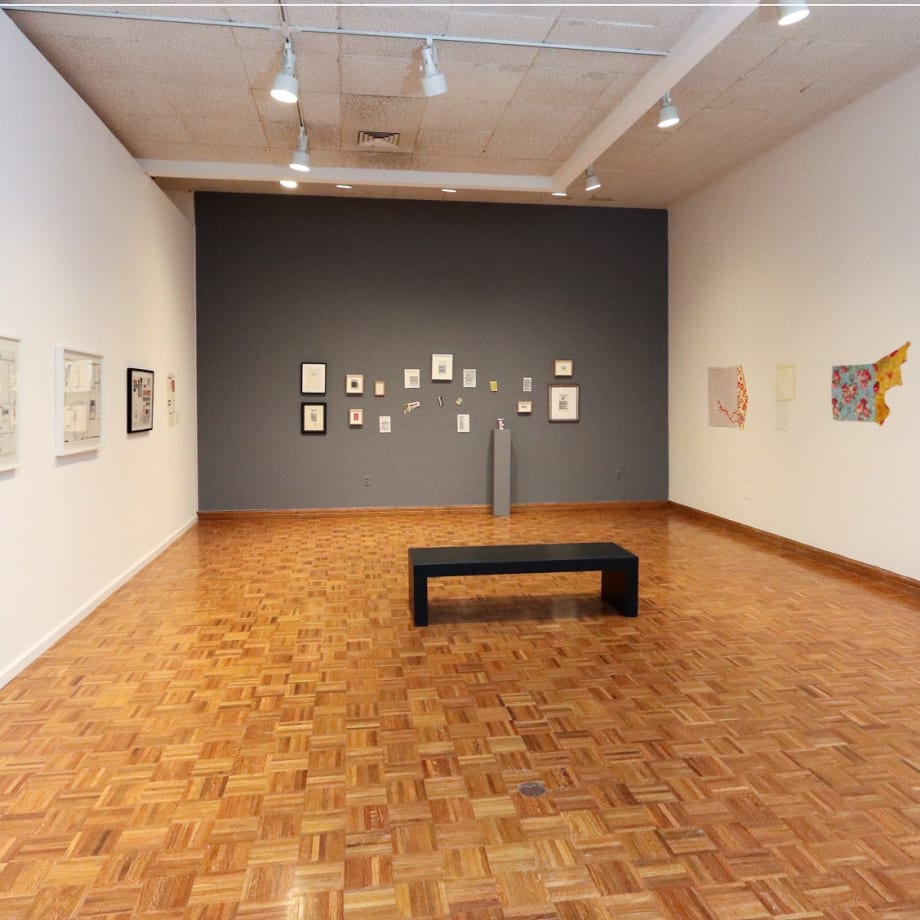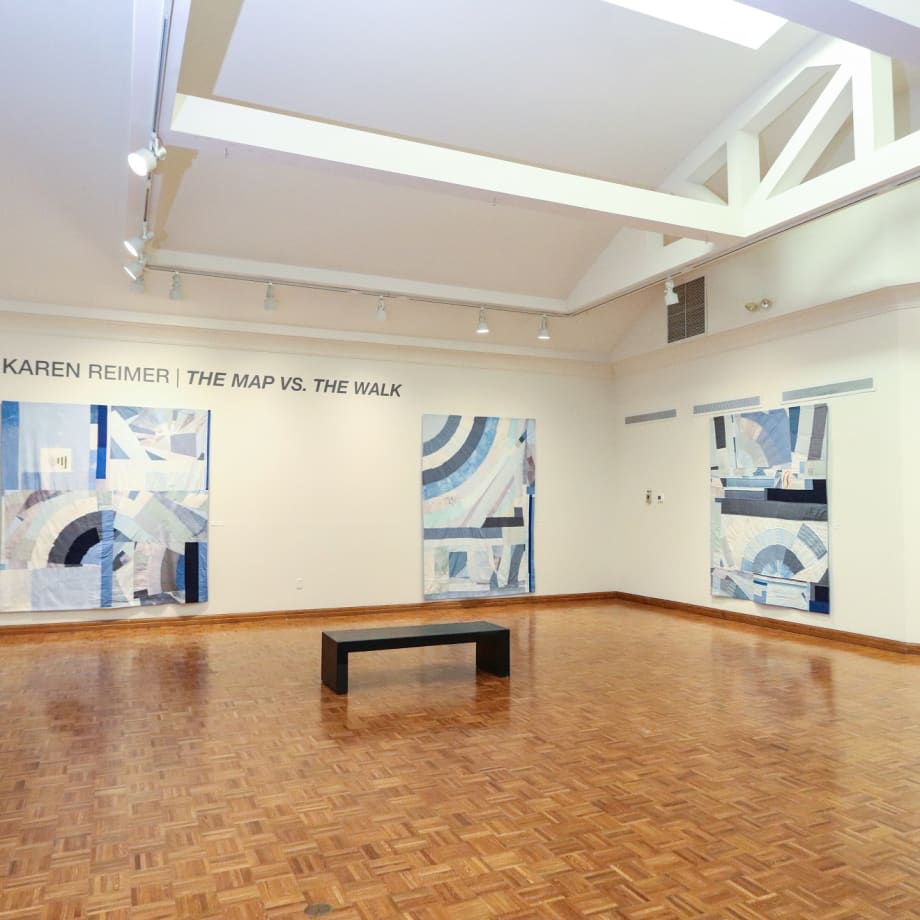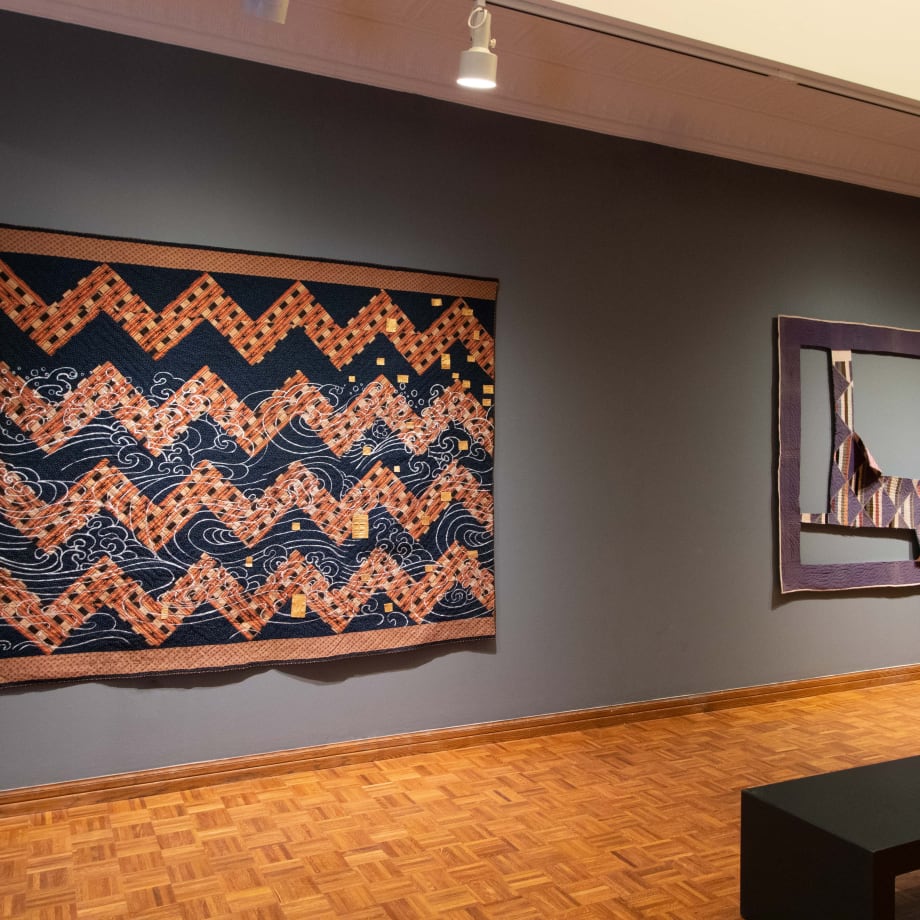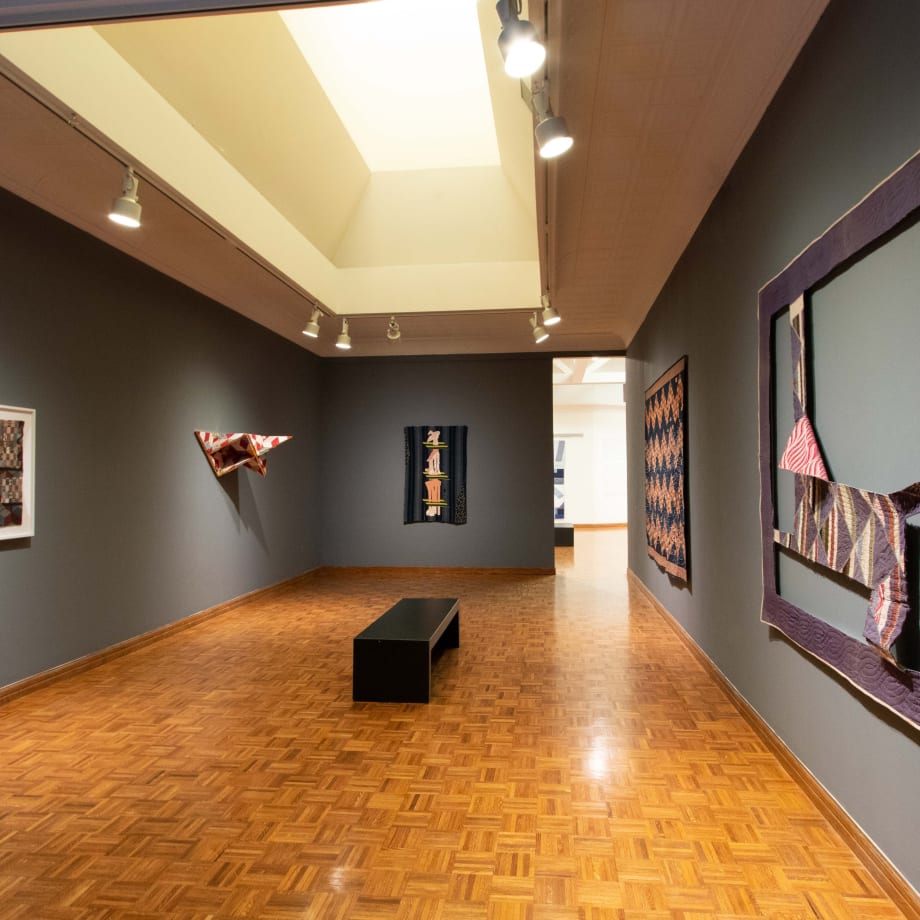The Map vs. The Walk
February 9 – April 24, 2022
Karen Reimer
The Salina Art Center is pleased to present The Map vs. The Walk, a survey of works from artist Karen Reimer. The title is a nod to the difference between knowledge and experience, a balance between abstraction and sensation which affords the viewer an entry point into the artist’s conceptual practice. Through her painstaking embroidery, a repetitive movement that activates thinking, the artist aims to make knowledge material, and thereby become more connected to the information that she is embroidering.
Reimer’s work attempts to slow down the process by which we classify and assess information. She is deeply attracted to things that are not easily classified, that are in the realm of ambiguity. Language, cultural assumptions, and value systems are all examined through these methodical hand-stitched works. Cognition, meaning, value, pattern recognition, and systems are all important to this Chicago-based, Kansas native.
Contemporary culture waxes heavily on the misreading of information as we often fail to fully assess it due to the ways that it is presented to us. Two cognitive terms that describe how we potentially incorrectly process visual information are “pareidolia” and “apophenia.” Recognizing familiar things in random objects, like seeing a face in a cloud is referred to as pareidolia. Similarly, apophenia is the tendency to see meaningful connections between unrelated things and can be a bit more extreme. In her work, Reimer exacerbates how these cognitive tools play with our ability to make accurate and informed conclusions.
Patching Voyages
February 9 – April 24, 2022
Sanford Biggers
The Salina Art Center is pleased to present Patching Voyages, the first solo presentation from artist Sanford Biggers in Kansas. In Patching Voyages, Biggers uses Civil War era quilts as hosts to reexamine the histories that exist around them. The artist then stitches, paints, and layers new visual narratives onto these archived materials. Through this act of appropriation, the resultant artworks are now excised out of their previous functionality, allowing them to serve, presently, as spaces for reflection.
Biggers works in a variety of media but is well known for his unique practice of sifting, questioning, and reassessing history. His approach treats history like a malleable material, removing it from a linear assessment and permitting it to be shifted by present and future occurrences.
Well versed in many typologies, the artist mines themes including the African and Asian Diaspora, Buddhism, Afro-Futurism, hip-hop culture, and urban life. These artworks were also informed by previous accounts suggesting that quilts served as signposts on the Underground Railroad. Allowing for folklore to enter into this exchange respects the past while creating a platform for a more active and engaged







